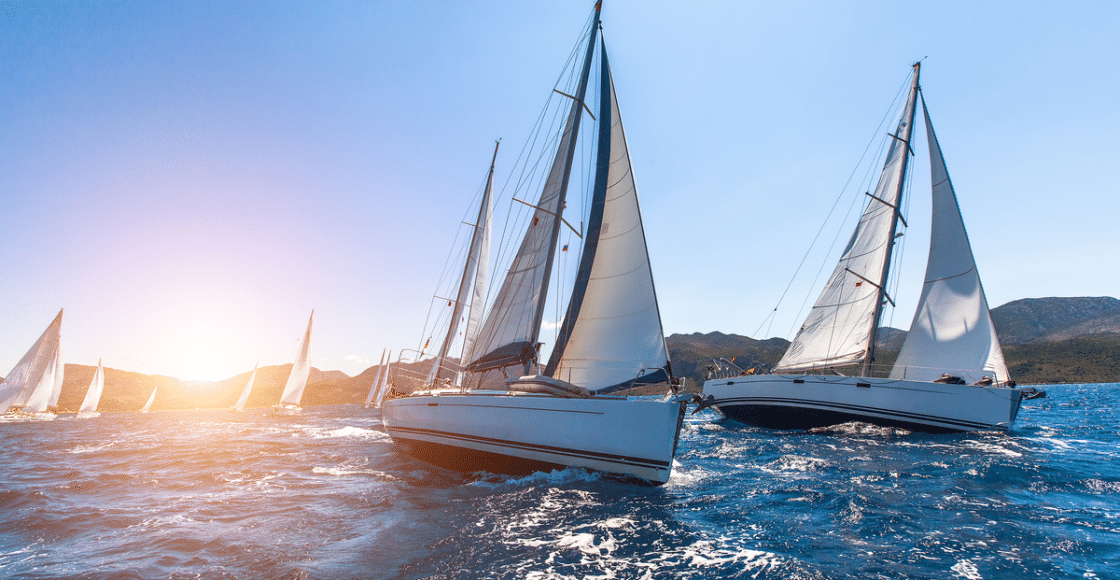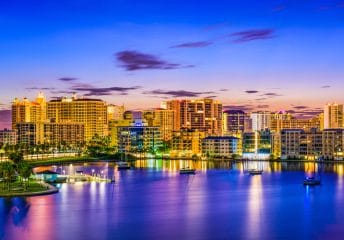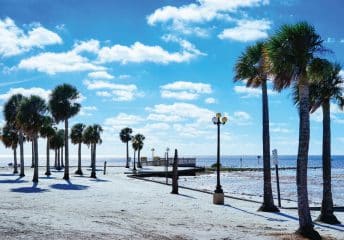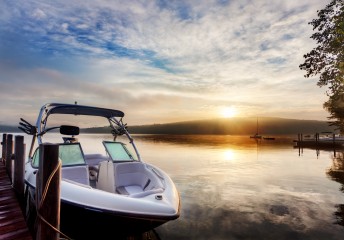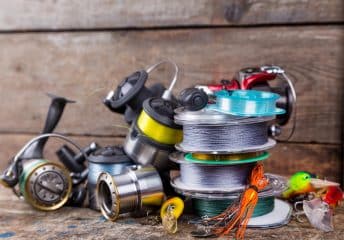How Much Wind Is too Much for Boating?
Last Updated on May 24, 2024 by Boatsetter Team
How much wind is too much for boating depends on your boat and your skill level. Vessels less than 25 feet need to head for shore if winds start approaching the 10 miles per hour mark unless they are constructed and equipped for such weather. In this post, we will go over how much wind is too much for boating and other things like:
- Marine weather statements
- What’s a strong wind warning for boating?
- How much wind is too much for fishing?
- Is 10 mph wind bad for boating?
Read all the way through to catch all Pro tips.
Rent. List. Share—Only at Boatsetter
How much wind is too much for boating?
Johnboats, dinghies, skiffs, and even larger powerboats can find themselves in trouble if a wave height reaches 18 inches. When waves reach that height, they can swamp or capsize your boat, and neither is a pleasant experience. Suppose the water is cold or you are out of sight of land and other boaters. In that case, it can be an exceedingly dangerous experience.
These are some general guidelines for understanding how the wind conditions might affect sailing or boating
- Light Winds ( 0 – 12 mph or 0-10 knots )
- These winds are ideal for most boating activities, including sailing, fishing or cruising
- It’s safe to go boating with small boats and beginner operators
- Moderate winds ( 13-24 mph or 11-21 knots )
- Experienced boaters can handle such winds with ease
- Small boats may become unstable
- Sailors might find these conditions more challenging, but they are still manageable
- Strong winds ( 25-38 mph or 22-33 knots )
- When you are dealing with strong winds, caution is advised for all types of boats
- Small boats should mostly avoid going boating as there’s a high chance for high waves and instability
- Experienced captains in large boats can still operate, but there’s an increased risk
- Very strong winds ( 39-54 mph or 34-47 knots )
- All recreational boating activities are recommended to be postponed
- Only experienced captains operating large boats should go on the water
- Dangerously strong winds ( 55+ mph or 48+ knots )
- It’s advised to avoid boating
If the wind forecast shows strong winds for your boating day, considering renting a boat with an experienced captain.
How much wind is unsafe for boating?
There is a system in place that helps keep boaters safe. If followed, it will allow you to get off the water before it becomes too dangerous to be there or have the foreknowledge to stay home. Simply put, it depends on your boat, your skill, and the route. For example, if you are sailing, a brisk 20-knot wind may work great if you’re operating a 50-foot sailboat across the ocean.
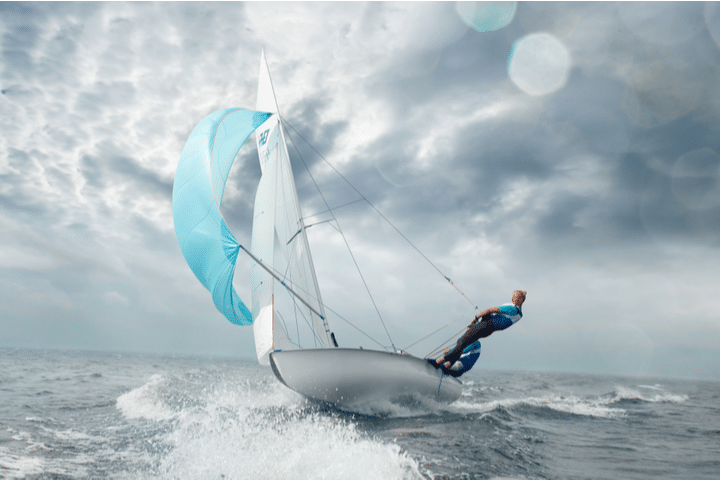
However, that same 20 miles per hour wind on a smaller sailboat could knock it down, tossing its crew into the water, making for a dangerous situation. Even in calm conditions.
Marine weather statements
You can find marine weather statements on NOAA’s National Weather Service (NWS). They are issued to advise boaters of current and future weather conditions such as dense fog and high winds and tides. In addition, marine weather statements warn of coming weather that has not yet reached a warning or advisory level.
Pro tip: To better understand marine statements make sure to memorize these key terms:
- Watch– informs mariners when a significant or hazardous weather event is possible, but not imminent during the next 12 to 36 hours.
- Advisory– indicates that a hazardous weather event is coming, imminent, but does not meet warning criteria.
- Warning– alerts mariners that a significant or hazardous weather event is likely, imminent, or occurring, and is a threat to life and property.
Small craft exercise caution
Marine weather statements will indicate a small craft advisory when sustained winds reach the 17–23 mile per hour range.
Small craft advisory
Small craft warnings are announced when sustained winds reach 24 to 38 miles per hour (21 to 33 knots). The notification can also be broadcast if waves are occurring or are expected to occur seven feet in height.
Special marine warning
Special marine warnings are issued when wind conditions reach intermittent gusts of 39 miles per hour and over the water. These warnings generally come from weather conditions caused by thunderstorms. They are also issued when waterspouts have been sighted over water.
Storm warning
Issued once wind speeds reach 55 miles per hour, storm warnings indicate weather generated from a non-tropical storm weather condition.
Gale warning
Gale warnings come out when wind speeds hit 37 miles per hour and are associated with non-tropical storm events. If your boat is less than 40 feet in length, you should be off the water long before the wind hits this velocity. After gales, you reach tropical storm and hurricane wind levels. At this point, boating should be the last thing on your mind.
Pro tip: Always check the forecast before heading out on the water. You can tune into a local news channel, use the weather app, or go to NOAA. Don’t wait until last minute to check either, if your trip is a week out, even two weeks, set a reminder to check the weather.
What’s a strong wind warning for boating?
Wind speeds above 15 miles per hour can make boating uncomfortable, especially if the wind speed is accompanied by choppy water. In addition, the combination of wave and wind motion could necessitate breaking out the seasick medication for those not accustomed to spending time on boats. Even the saltiest sailors get seasick, though, and an active ocean is a recipe for motion sickness. Boating can become rough and less than enjoyable when the wind and waves act against you. The threat of a seasick crew is the best argument for watching the weather and making your boating outings on fair days.
How much wind is too much for fishing?
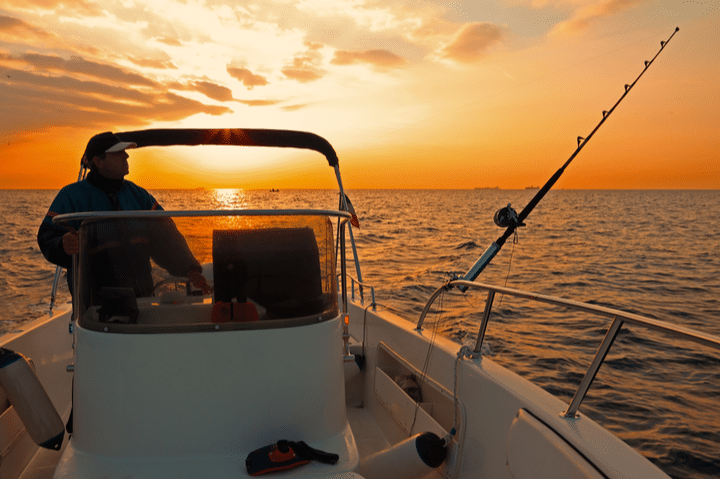
It depends on the kind of fishing you are doing, your boat, and your experience. For example, a 20-knot wind won’t affect a sizeable offshore powerboat noticeably. However, if you are fishing in a 15-foot skiff, a 20-knot wind can make for rough boating and lousy fishing. Unless your boat is built for heavy water, which some smaller boats are, pleasure boats under the length of 25 feet should head for the dock if the wind reaches ten miles per hour or more.
Of course, the speed of the wind doesn’t always dictate the size of the waves, and open water like the Atlantic or Pacific Ocean can have high waves even when the wind is not high. In these conditions, smaller boats will have difficulty navigating big rolling waves. Larger boats will do fine when big waves are rolling in, but it can get very messy in a hurry if the wind does come up. A confused sea state stirred by wind and water is dangerous for small boats and can even be hard to navigate.
Pro tip: In case of breakdowns on the water, be sure to have a Float Plan. Also, contact TowBoatUS by phone at 1-800-391-4869, or VHF Channel 16: Hail “TowBoatUS,” for assistance.
Explore water-travel destinations! Find your next trip at Destination guides and other boating resources here.
About us
Boatsetter is a unique boat-sharing platform that gives everyone — whether you own a boat or you’re just renting — the chance to experience life on the water. You can list a boat, book a boat, or make money as a captain.
Rent. List. Share—Only at Boatsetter

Boatsetter empowers people to explore with confidence by showing them a world of possibility on the water. Rent a boat, list your boat, or become a Boatsetter captain today.
